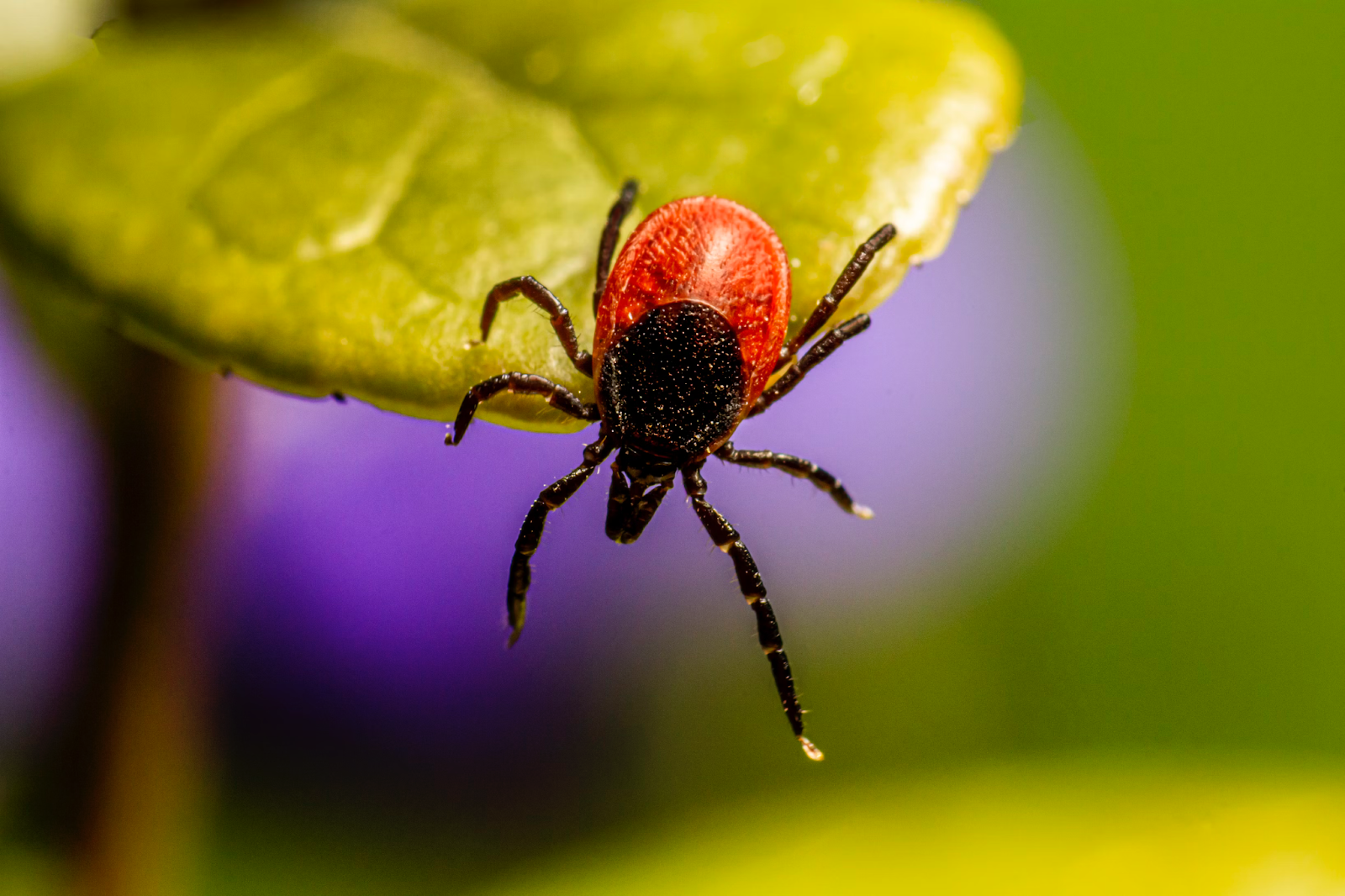by Margaret Dedloff
Ticks are arachnids (like spiders!) that need to feed on blood from humans and other animals to survive. For this reason, they are referred to as external parasites, because they need other animals to survive, but live outside of their host’s body. Ticks are able to sense animals’ breath, sweat, heat, moisture and even vibrations! To find animals to feed on, ticks can do a behavior called questing, where they will hang off of a blade of grass or a branch with their back legs, and reach their front legs out to grab onto any animal that brushes by the plant (Figure 1).

Figure 1. When ticks are looking for an animal to feed from, they will perform a behaviour referred to as “questing,” which is demonstrated in this image. Ticks will hold onto a plant with their hind limbs, and leave their front legs out to grab any animal that brushes past them. Image source.
There are more than 90 species of ticks in the United States, with the most common species in North Carolina being American dog ticks, blacklegged ticks, brown dog ticks, lone star ticks, and Asian longhorned ticks. While ticks can be found in NC year-round, the most common times for people to experience tick bites are during the late spring, summer, and early fall. Tick bites can generally be a nuisance because, unlike mosquitoes, ticks will attach and bite for a period of 3 to 10 days, and have to be removed with tweezers. Beyond being annoying, tick bites can result in disease, such as Lyme disease (caused by bacteria Borrelia burgdorferi), Rocky Mountain spotted fever (caused by bacteria Rickettsia rickettsii), and alpha-gal syndrome.
Alpha-gal syndrome is unique among diseases caused by tick bites because it is not caused by a bacteria or a virus. It is usually only caused by the bite of a lone star tick. When a lone star tick bites a human, it transfers galactose-α-1,3-galactose, a sugar that is also referred to as alpha-gal, from its saliva into the human. When alpha-gal is injected via the tick bite, the human host mounts an antibody response against it. This means that whenever the person who got bit comes in contact with alpha-gal, they will have an allergic reaction to it. Alpha-gal is present in large amounts in red meat, such as beef or lamb, and it can also be found in dairy products, though to a lesser extent. Those with alpha-gal syndrome from a lone star tick bite are often unable to eat these products without having an allergic reaction.
While alpha-gal and other tickborne diseases are scary, there are ways to prevent them. The best way to prevent these diseases is to avoid tick bites! To avoid tick bites you can use insect repellent, avoid places with tall grass where ticks might hang out, and check yourself and your pets for ticks after going outside (Figure 2)!

Figure 2. There are several ways you can avoid tick bites, including wearing light clothing and walking in the middle of trails, away from tall brush. Figure made by author in BioRender.
